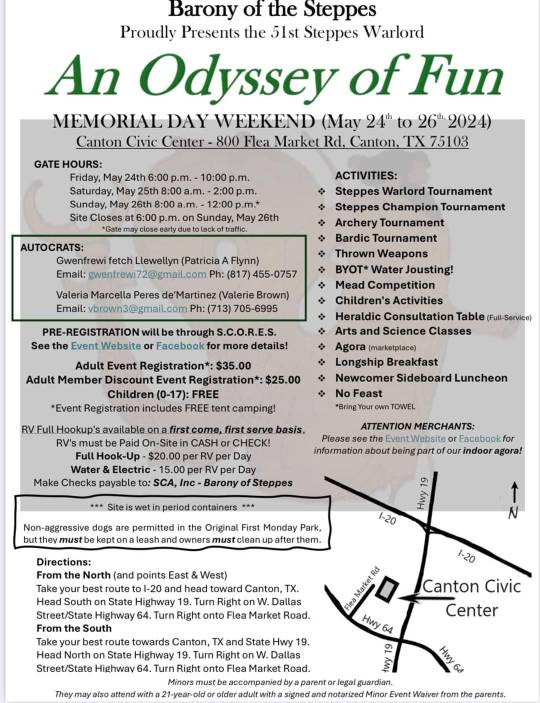Text
Closeups!




It's beautiful outside, but I got super sick last night and am pretty weak, so it's time for inside activity. Putting the pieces together for an oversized Gokstad Pouch that I started at the last SCA a&s meeting. The plan is to make an early medieval/viking bag to reduce the weight on my belt. I have this chrome tanned leather that I made into a hnefatafl board, but I didn't like the end result so I'm recycling it. I also have this lovely yellow cotton that I had planned to turn into a kaftan, but I have plenty of material to spare and this will give me some good practice before I start on that project. This is mostly experimental for me. I'll be turning the access hole in the lining like the paneling in a keyhole neck on a tunic, so im starting the assembly there. Jasmine has decided to serve tea and cake while I work.

Starting with a basting stitch to hold it in place

Followed by a back stitch in my contrasting thread where the panel will turn, and then cutting out the hole

And after ripping out the basting stitch, I've turned the panel into the hole and flattened the seam with an iron. Next step will be stitching it to the showy piece.
10 notes
·
View notes
Text
The BBQ chest as it currently stands

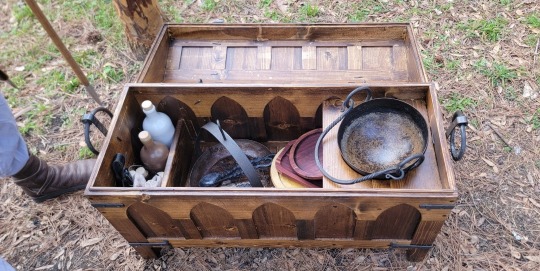


We use all of this to cook with out at Faire of Champions.
15 notes
·
View notes
Text
General Unorganized Tags -
A section of the Justgarb master tag list
#costuming #garb
#asks #commentary
#reference
#history #archeology
#unhinged
0 notes
Text
Some more embroidery that I've done in 2022:
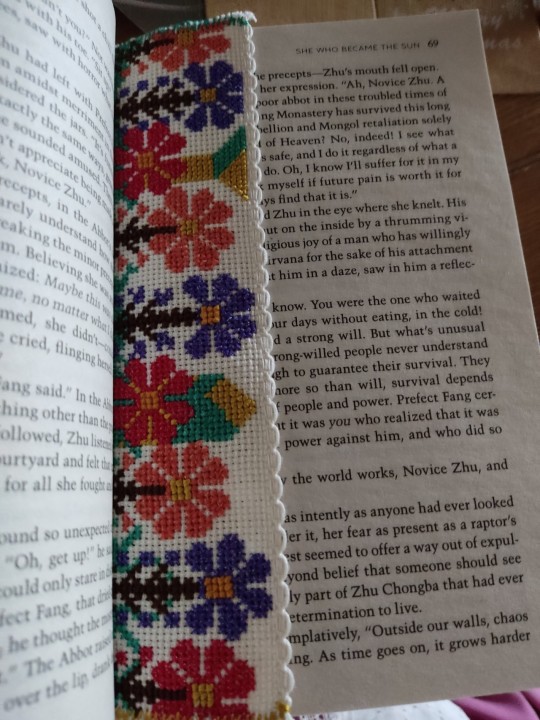
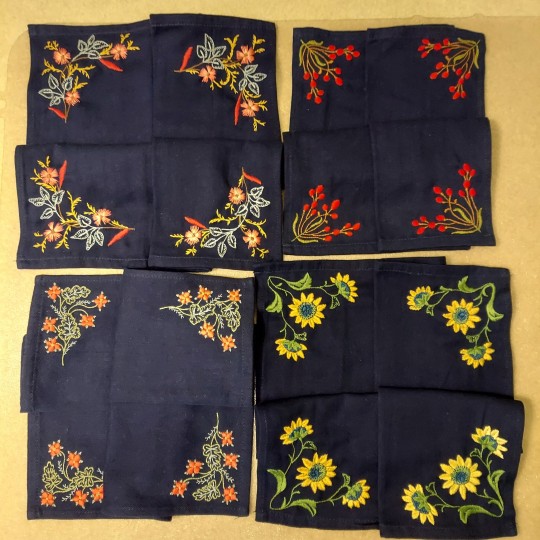
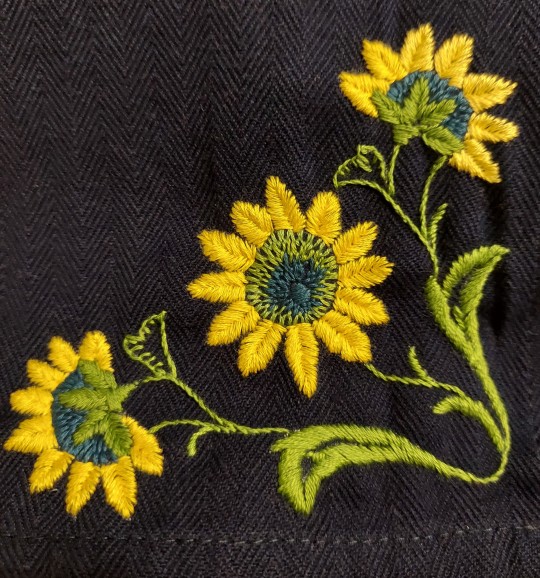

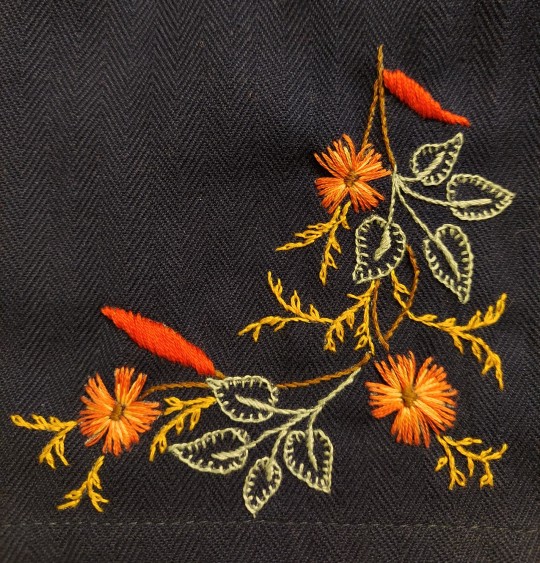

The designs for the napkins were lifted from DMC Library's Motifs for Embroideries, 5th series, which is available at the Antique Pattern Library. And some current WIPs:


712 notes
·
View notes
Text
I'm getting a lot more used to parts of marketing like making product videos. This one was pretty fun!
(This is using the Unicorn Power embroidery pattern)
61 notes
·
View notes
Text

Three months later and I've finally finished the fuckoff braid just in time to procrastinate on making my hedeby bag. It's a fuckoff piece because I should have double stranded it to make a belt and didn't want to waste the wool yarn or all of the bobbin winding I had already done. It shall be the shoulder strap. 6 brown 6 green skjoldehamn braid, about 7 foot (2.1m) long
8 notes
·
View notes
Text
Update: I've hit the max link limit in the masterpost. I'll be splitting one or more sections of the tag list into a separate post at some point soon
1 note
·
View note
Text
mutuals in my heart we are all doing arts n crafts together
3K notes
·
View notes
Text

Today I am thinking about weaving.

I can knit and crochet, but those crafts didn't exist in Roman times. Any historically accurate Roman cloth must be woven. So when a little potholder loom jumped into my shopping basket for 50 cents, it felt like a sign I should learn.
One potholder that was 50% yarn and 50% weird gaps later, I looked up a tutorial, and realized why the damn thing was 50 cents. I needed a better, more adaptable loom. And, because I am a cheapskate and slightly loony, I decided to make one instead of buying it.

So, how does this thing work?
First, you string the warp threads up and down, around the pegs. Here, I made a zigzag shape. Then, you use a needle or shuttle to weave more yarn over and under the warp, horizontally, back and forth. This produces woven fabric.

Some looms weave from the top, some from the bottom. This Greek urn shows two weavers working from the top. The left weaver uses a rod to compact the woven fabric upward, keeping it even and sturdy. The right weaver is passing an oval-shaped shuttle through the warp threads to form another row.

Most Roman looms would have looked like this, with the finished cloth at the top. Unlike my looms, these are warp-weighted. That means you keep the warp yarns taut by hanging weights at the bottom, rather than through a bottom row of pegs.
Warp-weighted looms also have a big advantage over my little potholder loom: you can easily create multiple sheds.
A "shed" is a temporary gap between lifted strands and non-lifted strands. Instead of having to go over and under each strand individually, you raise the entire shed, then pull the shuttle or needle straight through. This saves lots of time! Then, to weave the next row, you close the shed, lift up a different set of threads to create a new shed, and send the shuttle/needle through the other direction.

On a warp-weighted loom, the sheds are opened by loops called heddles (H), which are attached to a heddle rod (G). When the rod is down, shed (1) is open (middle diagram). When you pull the rod up, shed (1) closes and shed (2) opens instead (right diagram). Most warp-weighted looms also have a pair of forks you can rest the heddle rod on, to free your hands.

Here, there are three heddle rods and sets of forks, the heddles are white, and the warp thread is red. This gives you four different sheds, and the potential to weave very complex patterns indeed. Not bad for a device invented over 6500 years ago!
I liked the multiple heddle-rod design so much, I tried incorporating it into my DIY loom, too. I've tested both yarn and paperclips as heddles:

I actually got both sheds and heddle-rods working, too. Which is pretty cool for a lap loom - every other lap loom I found only has one shed, so you have to go over-under the individual threads on alternate rows.* More time-consuming. However, the sheds here are narrow, and I'll need a smaller and smoother shuttle to pass through them smoothly. This wouldn't be an issue on a warp-weighted loom, where the warp hangs freely downward, and can move more flexibly with the heddles.
Anyway. I may get a "real" loom at some point, but I wanted to build one first, and I think it gave me more appreciation for just how resourceful ancient weavers were. They created technology, clothing, and artwork out of very basic materials, and civilization depended on these skills.
Now, I need to go finish the...whatever the hell it will be. Big thanks to Wikipedia and to the lovely Youtubers who make this craft easier to learn. I think it'll be a lot of fun.
(*Edit - found out a rotating heddle bar can make two sheds on a lap loom! Exciting!!)
1K notes
·
View notes
Text
youtube
Lady Jessimond shared this heraldry intro in our bookface SCA group and of course I have to queau it up here. Preceding videos were added earlier in the queau.
4 notes
·
View notes
Text
You, a heroic paladin have successfully slain a fearsome dragon. But the dragon warns you that death is but a door, and dragons don’t die, they reincarnate. You paid it no mind….until your son was born with golden, slitted eyes.
28K notes
·
View notes
Note
So I've seen conflicting stories about the colour black in history.
Some say it's very expensive and hard to maintain, so that's why rich merchants wore black. Evidence in portraits.
Some say that for dyes it's on the cheaper side actually.
Some say the expensive black doesn't come from dye but rather the colour of the animal, so black fabric comes from black fibre which comes from black sheep. How exactly would black sheep be more expensive than regular white sheep?
Which one is right? I know this is probably influenced by which century it's set in, like maybe some eras have an easier time getting black dye
I found a well-sourced blog post about this, luckily, because I'm a 19th-century focused researcher and I've heard conflicting things about black in earlier periods. It seems to be that high-quality black-dyed fabric was difficult to obtain in the west from the Middle Ages potentially through the 18th century because it required massive amounts of dye to get the color very deep ("true black"). Lesser black shades were quite common, though, so black, period, doesn't seem to be more expensive than any other color. Possibly the intensively dyed, deep blacks might have been? But not black in general.
source
Rich merchants did wear black- but so did other people. They just usually didn't have portraits.
The black sheep thing I've never heard before. And anyway, that could only apply to wool- not cotton, linen, silk, leather, etc.
1K notes
·
View notes
Note

While I see many references here to records in the early modern/late medieval, I do have my doubts about the early medieval.
BUT the faster rotting would explain quite a lot, as preserved textile finds from that period are already rare due to decay.
The black we see in illustrations of woolen monks robes is because wool from black sheep (actually brown) was the cheap because it cannot be dyed other colors.
So I've seen conflicting stories about the colour black in history.
Some say it's very expensive and hard to maintain, so that's why rich merchants wore black. Evidence in portraits.
Some say that for dyes it's on the cheaper side actually.
Some say the expensive black doesn't come from dye but rather the colour of the animal, so black fabric comes from black fibre which comes from black sheep. How exactly would black sheep be more expensive than regular white sheep?
Which one is right? I know this is probably influenced by which century it's set in, like maybe some eras have an easier time getting black dye
I found a well-sourced blog post about this, luckily, because I'm a 19th-century focused researcher and I've heard conflicting things about black in earlier periods. It seems to be that high-quality black-dyed fabric was difficult to obtain in the west from the Middle Ages potentially through the 18th century because it required massive amounts of dye to get the color very deep ("true black"). Lesser black shades were quite common, though, so black, period, doesn't seem to be more expensive than any other color. Possibly the intensively dyed, deep blacks might have been? But not black in general.
source
Rich merchants did wear black- but so did other people. They just usually didn't have portraits.
The black sheep thing I've never heard before. And anyway, that could only apply to wool- not cotton, linen, silk, leather, etc.
1K notes
·
View notes
